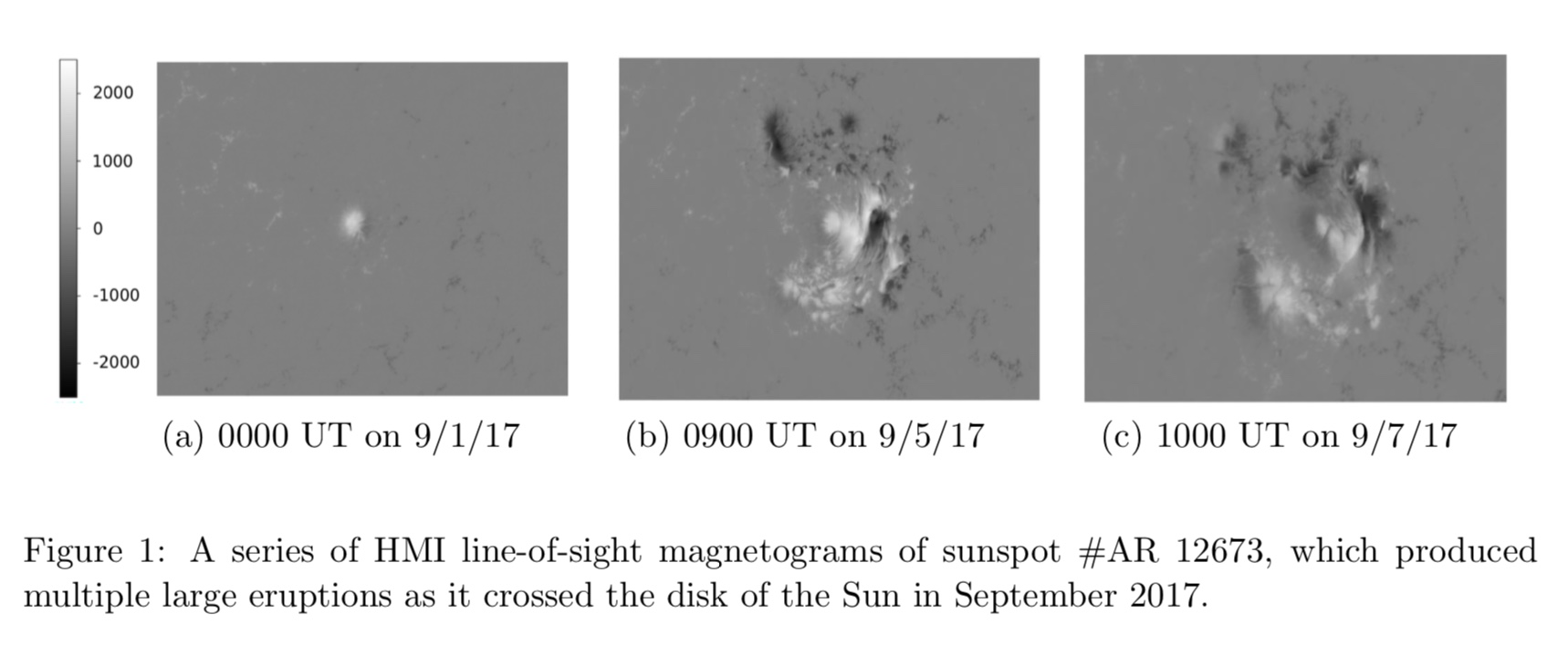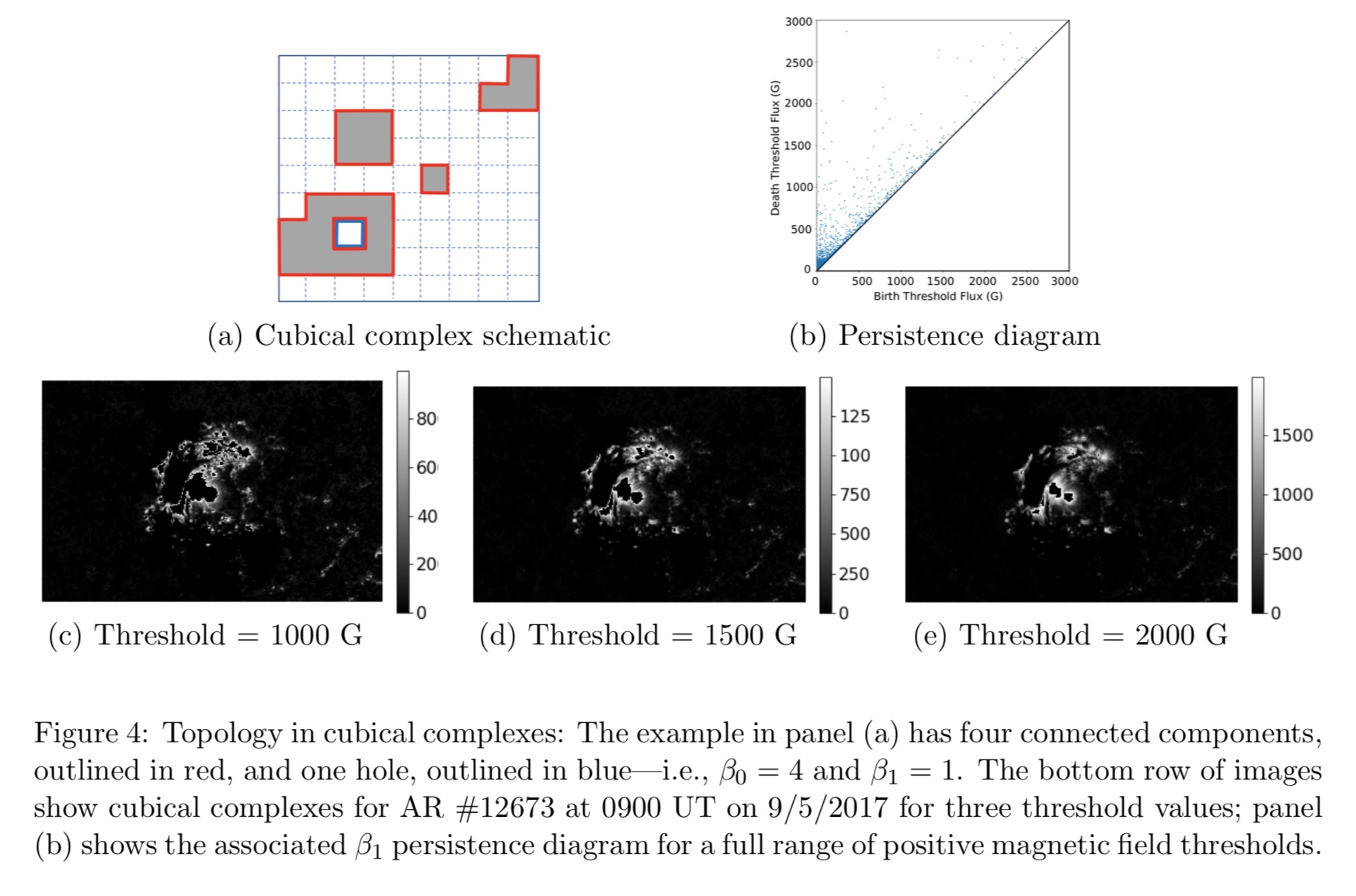
Eruptions generated by sunspots - large concentrations of magnetic field on the visible surface of the sun - can have a number of dire impacts on Earth-based technological systems, crippling satellites and power grids, among many other things. With enough advance notice, the effects of these events can be mitigated, but predicting them is a real challenge. The key to that prediction is the shapes of the structures in the magnetic fields of these regions. As you can see from the sequence of magnetogram images below, the configuration of the magnetic fields in this active region evolves during the lead-up to a flare, starting out quite simple, as in (a), then growing more and more complex as the onset of the flare approaches, and relaxing to a slightly "fuzzier" state after the flare releases some energy from the system (c).
 |
Recently, there has been a burst of work on machine-learning (ML) methods to automate this task, including the straightforward approach of tossing images like the ones above, labeled as to whether or not a flare occured in that active region within n hours, into a CNN. Other approaches have taken a feature-based approach, distilling higher-order properties out of the magnetogram data and using those as inputs to the ML methods. To date, the features used in these approaches have been predominately physics-based: the gradient of the magnetic field, for instance, or the sum of its strength over high-flux regions.
Our goal in this project was to leverage algorithms based on the fundamental mathematics of shape - topology and geometry - to improve the performance of these methods. We used these powerful techniques to extend the relevant feature set to include characteristics of the magnetic field that are based purely on the geometry and topology of 2D magnetogram images. Using cubical complexes, we computed the topology of different level sets of the magnetogram images, caputing the results in the form of persistence diagrams:
 |
Even though this approach ignores the 3D structure of the full electromagnetic fields, we found that it can enhance the predictive skill of machine learning systems. Our results, described in the products listed below, show clear topological changes emerging in magnetograms well before flares occur, as well as clear improvements in the accuracy scores of different machine-learning methods that employ featurized persistence diagrams, alone and in combination with the traditional physics-based features. We have also shown that model complexity is not necessarily an advantage in this context: indeed, simpler ML methods often work just as well, if not better, than highly sophisticated models.
This is the first time that systematic quantitative measures of the shape of 2D magnetic structures in the photosphere have been proposed for the purposes of flare prediction. In a sense, this amounts to a mathematical systemization of the venerable McIntosh and Hale classification systems. Note that this approach differs from current studies in the solar-physics community that model the magnetic field-line structure: it uses topology to address the structure of two-dimensional sets. The analysis is restricted to photospheric magnetic field structures; the goal is to extract a formal characterization of shape that can be leveraged by machine learning to improve flare prediction. Our considered addition of geometry into these methods is essential if we are to capture the full richness and physical relevance of the structures important in the evolution of a sunspot.
